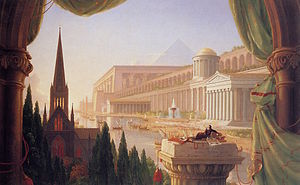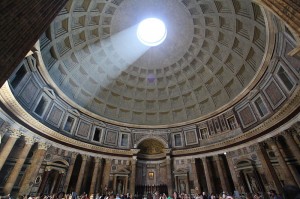The Top 50 Architectural Achievenments
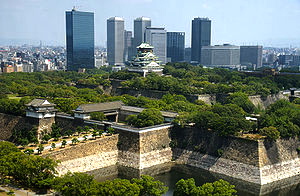
Best Architecture Designs for All Time
Great Architecture Buildings
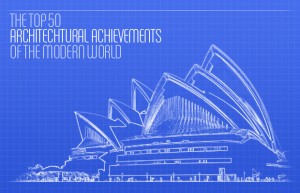 The Top 50 Architectural Achievenments
The Top 50 Architectural Achievenments
The “Modern World” has brought us awesome stuff, from hot water to Internet in the air to fake body parts on ladies of the night. It has also enabled architects to build structures that have defined our existence, allowing us to live close to each other, get to places faster, and to look up in awe at impossible-seeming buildings. Today we look at the greatest things human beings have built since we figured out how to put wood, steel, and a bunch of other stuff together and call it a house. Take the time to check this feature out by clicking on the arrows and thumbnails above, there is plenty of cocktail hour fodder for you here.
The Architect’s Dream by Thomas Cole (1840) shows a vision of buildings in the historical styles of the Western tradition, from Ancient Egypt through to Classical Revival
The History of architecture traces the changes in architecture through various traditions, regions, overarching stylistic trends, and dates.
 A view of Chuo-ku, Osaka, Japan showing buildings of a modern Asian city, ranging from the medieval Osaka Castleto skyscrapers
A view of Chuo-ku, Osaka, Japan showing buildings of a modern Asian city, ranging from the medieval Osaka Castleto skyscrapers
Neolithic Architecture
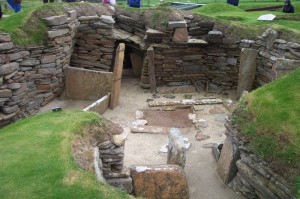 Excavated dwellings at Skara Brae – Neolithic architecture
Excavated dwellings at Skara Brae – Neolithic architecture
Neolithic architecture is the architecture of the Neolithic period. In Southwest Asia, Neolithic cultures appear soon after 10000 BC, initially in the Levant (Pre-Pottery Neolithic A and Pre-Pottery Neolithic B) and from there spread eastwards and westwards. There are early Neolithic cultures in Southeast Anatolia, Syria and Iraq by 8000 BC, and food-producing societies first appear in southeast Europe by 7000 BC, and Central Europe by c. 5500 BC (of which the earliest cultural complexes include the Starčevo-Koros (Cris), Linearbandkeramic, and Vinča). With very small exceptions (a few copper hatchets and spear heads in the Great Lakes region), the people of the Americas and the Pacific remained at the Neolithic level oftechnology up until the time of European contact.
The neolithic people in the Levant, Anatolia, Syria, northern Mesopotamia and Central Asia were great builders, utilizing mud-brick to construct houses and villages. At Çatalhöyük, houses were plastered and painted with elaborate scenes of humans and animals. The Mediterranean neolithic cultures of Malta worshiped in megalithic temples.
In Europe, long houses built from wattle and daub were constructed. Elaborate tombs for the dead were also built. These tombs are particularly numerous in Ireland, where there are many thousands still in existence. Neolithic people in the British Isles built long barrows and chamber tombs for their dead and causewayed camps, henges flint mines and cursus monuments.
Ancient Near East Africa and Mediterranean
Ancient Egyptian Architecture
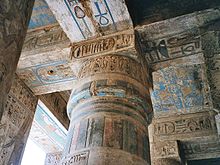 Ceiling decoration in the peristyle hall of Medinet Habu, an example of ancient Egyptian architecture
Ceiling decoration in the peristyle hall of Medinet Habu, an example of ancient Egyptian architecture
In Ancient Egypt and other early societies, people believed in the omnipotence of Gods, with many aspects of daily life carried out with respect to the idea of the divine or supernatural and the way it was manifest in the mortal cycles of generations, years, seasons, days and nights. Harvests for example were seen as the benevolence of fertility deities. Thus, the founding and ordering of the city and her most important buildings (the palace or temple) were often executed by priests or even the ruler himself and the construction was accompanied by rituals intended to enter human activity into continued divine benediction.
Ancient architecture is characterized by this tension between the divine and mortal world. Cities would mark a contained sacred space over the wilderness of nature outside, and the temple or palace continued this order by acting as a house for the gods. The architect, be he priest or king, was not the sole important figure; he was merely part of a continuing tradition.
Architecture of Ancient Greece
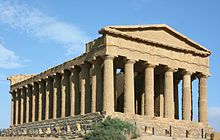 Temple of Concordia in Agrigento, Sicily.
Temple of Concordia in Agrigento, Sicily.
The architecture and urbanism of the Greeks and Romans was very different from that of the Egyptians and Persians. Civic life gained importance for all members of the community. In the time of the ancients religious matters were only handled by the ruling class; by the time of the Greeks, religious mystery had skipped the confines of the temple-palace compounds and was the subject of the people or polis.
Greek civic life was sustained by new, open spaces called the agora which were surrounded by public buildings, stores and temples. The agora embodied the newfound respect for social justice received through open debate rather than imperial mandate. Though divine wisdom still presided over human affairs, the living rituals of ancient civilizations had become inscribed in space, in the paths that wound towards the acropolis for example. Each place had its own nature, set within a world refracted through myth, thus temples were sited atop mountains all the better to touch the heavens.
Roman Temple: Maison Carrée, Nimes, France (contrast with Greek temple)
The Romans conquered the Greek cities in Italy around three hundred years BCE and much of the Western world after that. The Roman problem of rulership involved the unity of disparity — from Spanish to Greek, Macedonian to Carthaginian — Roman rule had extended itself across the breadth of the known world and the myriad pacified cultures forming this ecumene presented a new challenge for justice.
One way to look at the unity of Roman architecture is through a new-found realization of theory derived from practice, and embodied spatially. Civically we find this happening in the Roman forum (sibling of the Greek agora), where public participation is increasingly removed from the concrete performance of rituals and represented in the decor of the architecture. Thus we finally see the beginnings of the contemporary public square in the Forum Iulium, begun by Julius Caesar, where the buildings present themselves through their facades as representations within the space.
As the Romans chose representations of sanctity over actual sacred spaces to participate in society, so the communicative nature of space was opened to human manipulation. None of which would have been possible without the advances of Roman engineering and construction or the newly found marble quarries which were the spoils of war; inventions like the arch and concrete gave a whole new form to Roman architecture, fluidly enclosing space in taut domes and colonnades, clothing the grounds for imperial rulership and civic order. This was also a response to the changing social climate which demanded new buildings of increasing complexity — the coliseum, the residential block, bigger hospitals and academies. General civil construction such as roads and bridges began to be built.
The Romans widely employed, and further developed, the arch, vault and dome (see the Roman Architectural Revolution), all of which were little used before, particularly in Europe. Their innovative use of Roman concrete facilitated the building of the many public buildings of often unprecedented size throughout the empire. These include Roman temples, Roman baths, Roman bridges, Roman aqueducts, Roman harbours, triumphal arches, Roman amphitheatres, Roman circuses palaces, mausolea and in the late empire also churches.
Dome: Interior of the Pantheon in Rome
Roman domes permitted construction of vaulted ceilings and enabled huge covered public spaces such as the public baths like Baths of Diocletian or the monumental Pantheon in the city of Rome.
Art historians such as Gottfried Richter in the 1920’s identified the Roman architectural innovation as being the Triumphal Arch and it is poignant to see how this symbol of power on earth was transformed and utilized within the Christian basilicas when the Roman Empire of the West was on its last legs: The arch was set before the altar to symbolize the triumph of Christ and the after life. It is in their impressive aqueducts that we see the arch triumphant, especially in the many surviving examples, such as the Pont du Gard, the aqueduct at Segovia and the remains of the Aqueducts of Rome itself. Their survival is testimony to the durability of their materials and design.
http://www.complex.com/art-design/2011/02/the-top-50-architectural-achievements-of-the-modern-world/#gallery

